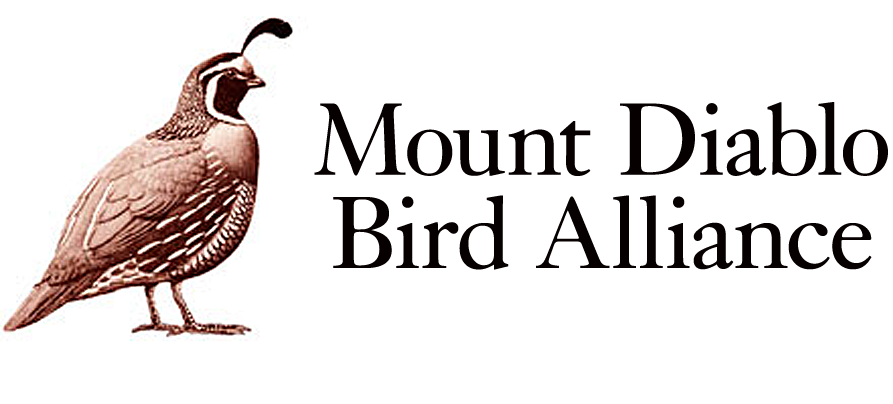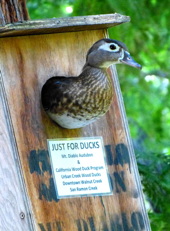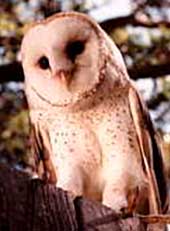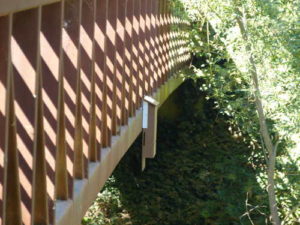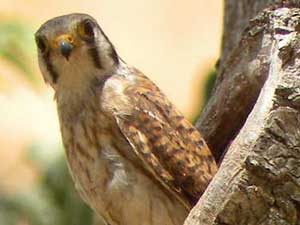
Conservation
Sign up to receive emails about Conservation activities and Legislative Action updates here.
Danger – Anticoagulant Pesticides
Anticoagulant rat poisons currently on the market (such as d-CON) contain highly toxic chemicals which interfere with the blood’s ability to clot, resulting in uncontrollable internal bleeding and death. In addition to rodents, other animals that feed on poisoned rodents are also poisoned!
Cats Indoors Program
The domestic cat is a non-native and invasive species. An estimated 600 million cats live worldwide, with approximately 160 million in the US. Cats are highly efficient, instinctive predators; even well-fed, they continue to hunt and kill wildlife. Worldwide they are responsible for the extinction of numerous mammals, reptiles and at least 33 bird species.
California Bluebird Recovery Program
Bluebirds and many other cavity nesting birds need our help by restoring spaces for their nesting and conservation. With such a goal in mind, the California Bluebird Recovery Program (CBRP) has undertaken to increase the help being given to the cavity nesting birds.
McNabney Marsh
Nestled between a busy freeway, railroad tracks, an oil refinery, a sewage treatment plant, a chemical plant, and a small community, McNabney Marsh has been one of the most productive wetland systems in the Bay Area, providing food and shelter for a wide variety of fish, mammals, birds and invertebrates. It is part of a much larger Peyton Slough Wetlands complex, a series of wetlands which includes Mt. View Sanitary District’s Moorhen Marsh plus other wetlands which drain a watershed covering more than 3,900 acres. Mt. Diablo Audubon also partnered with the Mt. View Sanitary District to host an Earth Day cleanup and bird watching event at McNabney Marsh on April 13, 2019.
Save Pittsburg Hills
A Seeno project to develop 1,500 houses on the beautiful hills next to the Concord Naval Weapons Station threatens the new regional park there.
Save Tesla Park
Tesla is a fragile, biologically diverse ecosystem southeast of Livermore that is home to 7 threatened and endangered species and habitats, and more than 50 rare ones, including mammals, rodents, birds, amphibians, plants and wildflowers, but is presently scheduled to be added to Carnegie SVRA.
Community Science
Scientists use information from these community science projects to get the “big picture” about what is happening to bird populations. The longer and more broadly these data are collected, the more meaningful they become in helping scientists investigate far-reaching questions.
Christmas Bird Counts
Every year MDAS participates in the National Audubon Christmas Bird Count. Chapter involvement in this popular community science project is one of our most significant contributions to promote conservation. The data is used in many important ways to determine the long-term health and status of bird populations across the continent.
Feeder Watch
FeederWatch, a Cornell University project, records the movement of migratory birds across the continent and runs seasonally from November to April. Following a specific protocol, participants record what birds are seen at the feeder during a set period of time on a weekly basis.
Great Backyard Bird Count
The Great Backyard Bird Count has been held every February since 1998. A joint project of Cornell Lab of Ornithology and National Audubon Society, it provides a snapshot of what birds are where just before the beginning of Spring migration on our continent.
Connecting People with Nature
Connecting People With Nature is a collaboration of individuals with a variety of skills and knowledge. The program has been going on since the early 1990s, with our main projects at present being the construction and monitoring of Wood Duck and Barn Owl nest boxes in the MDAS area.
